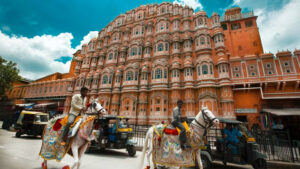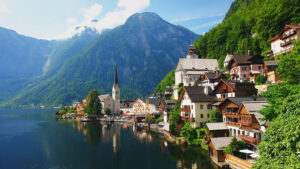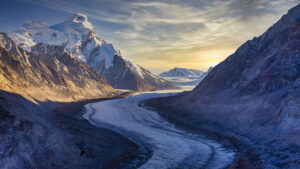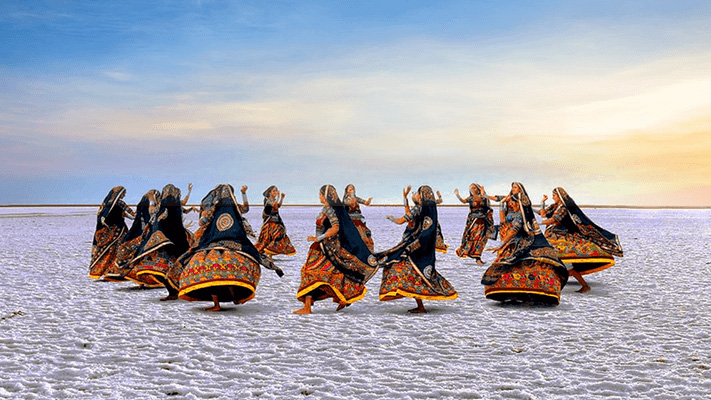UNVEIL NATURE’S MASTERPIECE AT THE GRAND CANYON, ARIZONA – WHERE WONDER KNOWS NO BOUNDS

The Grand Canyon, located in Arizona, USA, is a breathtaking natural wonder that has captivated the world with its awe-inspiring beauty and geological significance. Carved over millions of years by the mighty Colorado River, the Grand Canyon is a testament to the power of erosion and the intricate layers of Earth’s history. Here’s an overview of this iconic landmark:

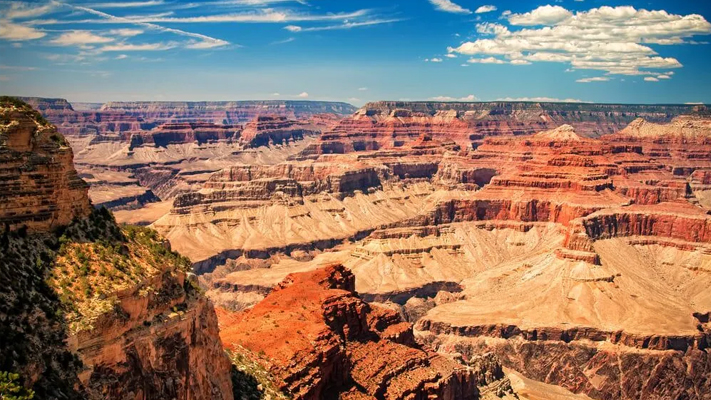
Stretching approximately 277 miles (446 kilometers) long, up to 18 miles (29 kilometers) wide, and reaching depths of over a mile (1.6 kilometers), the Grand Canyon is a colossal chasm of vibrant red and orange rock formations. Its sheer scale and intricate patterns reveal a geological timeline spanning billions of years, showcasing Earth’s geological evolution.
Key features and facts about The Grand Canyon:
- Geological Marvel: The exposed rock layers within the Grand Canyon’s walls tell a story of nearly two billion years of Earth’s history, showcasing different geologic eras, environments, and climate changes.
- Striking Colors: The canyon’s unique coloring comes from a combination of sedimentary rock types, minerals, and the interplay of sunlight and shadows. The hues shift throughout the day, creating a mesmerizing visual spectacle.
- South Rim and North Rim: The Grand Canyon is often visited from the South Rim and North Rim, each offering distinct viewpoints. The South Rim is more accessible and open year-round, while the North Rim is higher in elevation and offers a quieter, cooler experience.
- Scenic Vistas: Scenic overlooks like Mather Point, Grandview Point, and Desert View provide breathtaking panoramic views, allowing visitors to appreciate the canyon’s vastness and intricate detail.
- Outdoor Activities: The Grand Canyon offers a range of outdoor activities, including hiking, rafting, camping, and mule rides. The Bright Angel Trail and South Kaibab Trail are popular hiking routes, leading adventurers into the heart of the canyon.
- Havasu Falls: Located within the Havasupai Indian Reservation, these stunning turquoise waterfalls are a popular destination within the canyon.
- Dark Sky Park: The Grand Canyon is designated as an International Dark Sky Park, offering unparalleled stargazing opportunities due to its limited light pollution.
- Visitor Centers: The Grand Canyon National Park has multiple visitor centers, including the Grand Canyon Visitor Center at the South Rim and the North Rim Visitor Center, providing information, exhibits, and educational programs.
- Historical Significance: Indigenous tribes, including the Havasupai, Hualapai, and Navajo, have deep cultural connections to the canyon. The Grand Canyon also holds archaeological sites and remnants of early human settlements.
- Grand Canyon Skywalk: Located on the Hualapai Reservation, the Skywalk is a glass-bottomed bridge that extends over the canyon, offering a thrilling and panoramic perspective.
Visiting the Grand Canyon is an experience that leaves an indelible mark on visitors, inviting them to connect with the profound beauty of nature and ponder the grandeur of the Earth’s geological history.

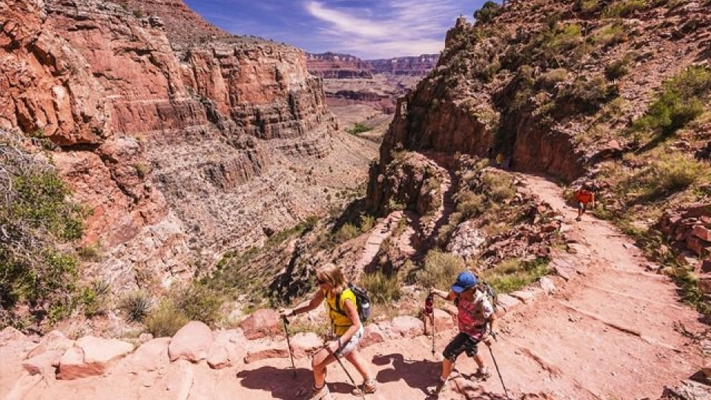
Visitor Experiences and Activities Enjoyed
Visiting the Grand Canyon in Arizona offers a multitude of unforgettable experiences and activities that cater to a wide range of interests. This iconic natural wonder provides a canvas for exploration, adventure, and appreciation of Earth’s geological marvels. Here are some of the most cherished visitor experiences and activities enjoyed at the Grand Canyon:
- Scenic Overlooks: Witnessing the breathtaking panoramic views from popular overlooks like Mather Point, Yavapai Point, and Lipan Point is a must. Each vantage point offers a unique perspective on the grandeur and vastness of the canyon.
- Hiking Adventures: Exploring the numerous trails within the canyon is a highlight for many visitors. From the rim trails to more challenging hikes into the inner canyon, like the Bright Angel Trail and South Kaibab Trail, hikers can experience the diverse landscapes and geological wonders up close.
- Mule Rides: Embarking on a mule ride down into the canyon offers a different perspective on the landscape and a taste of historic transportation methods used by early explorers.
- Rafting Trips: Rafting down the Colorado River provides a unique opportunity to experience the canyon from its very heart. Multi-day rafting trips offer a mix of adventure, relaxation, and camaraderie.
- Stargazing: The Grand Canyon’s International Dark Sky Park designation makes it an excellent destination for stargazing. The lack of light pollution provides a clear view of the night sky, and ranger-led astronomy programs are available.
- Helicopter Tours: Helicopter tours offer a thrilling aerial perspective of the vast canyon, showcasing its immense size and intricate geological formations.
- Photography: For amateur and professional photographers alike, the Grand Canyon presents endless opportunities to capture its ever-changing colors, shadows, and dramatic landscapes.
- Camping: Camping within the park allows visitors to immerse themselves in the canyon’s ambiance, waking up to spectacular sunrises and spending quiet nights under the stars.
- Visitor Centers and Exhibits: Learning about the canyon’s geology, history, and indigenous cultures through the park’s visitor centers and interactive exhibits enhances the overall experience.
- Havasu Falls: A visit to Havasu Falls, located within the Havasupai Indian Reservation, offers a chance to witness stunning turquoise waterfalls and immerse yourself in the enchanting beauty of the area.
- Rim-to-Rim Experience: For the adventurous, completing a rim-to-rim hike or backpacking trip is a bucket-list achievement, allowing you to traverse the entire width of the canyon.
- Exploring the North Rim: The North Rim offers a quieter, less crowded experience with its own set of trails, viewpoints, and a distinctive character.
Interesting Facts
- Age of the Grand Canyon: The Grand Canyon’s rocks are estimated to be around 1.8 billion years old, revealing an incredible geological history.
- Geological Layers: The Grand Canyon’s exposed rock layers represent a wide range of geologic eras, including Precambrian, Paleozoic, Mesozoic, and Cenozoic periods.
- Colorado River: The Colorado River, which carved the Grand Canyon, continues to flow through it, shaping the landscape over millions of years.
- Size and Dimensions: The Grand Canyon is approximately 277 miles (446 km) long, up to 18 miles (29 km) wide, and over a mile (1.6 km) deep.
- Mule Trains: Mule trains have been used for more than a century to transport supplies and people to and from the canyon’s floor. The tradition continues today for visitors interested in mule rides.
- Native Connections: Indigenous peoples, including the Havasupai, Hualapai, Hopi, and Navajo, have deep cultural connections to the canyon, with rich histories and traditions.
- President Theodore Roosevelt: President Theodore Roosevelt played a significant role in preserving the Grand Canyon by declaring it a national monument in 1908. It later became a national park in 1919.
- Phantom Ranch: Located at the bottom of the canyon, Phantom Ranch is one of the only places in the United States that can only be reached by mule, foot, or raft.
- Layer Colors: The distinct colors of the Grand Canyon’s rock layers are primarily due to different minerals within the rocks, including iron and copper.
- Fossil Record: The Grand Canyon’s rocks hold a rich fossil record, revealing the ancient plants and animals that lived in the area over the millennia.
- Rapid Erosion: The Colorado River continues to erode the canyon at a rate of about one foot (0.3 meters) every 1,000 years, shaping the landscape over vast time spans.
- Unique Weather: Due to its varying elevations, the Grand Canyon experiences different climates. Temperatures at the rim can be significantly colder than at the bottom of the canyon.
- International Dark Sky Park: The Grand Canyon is designated as an International Dark Sky Park, offering unparalleled stargazing opportunities.
- Layers and Time Travel: Each layer of rock in the Grand Canyon represents a different time in Earth’s history, effectively allowing visitors to “travel” through time by looking at the exposed rock formations.
- Grand Canyon Skywalk: Located on the Hualapai Reservation, the Skywalk is a glass-bottomed bridge that extends over the canyon, providing an adrenaline-pumping view of the depths below.

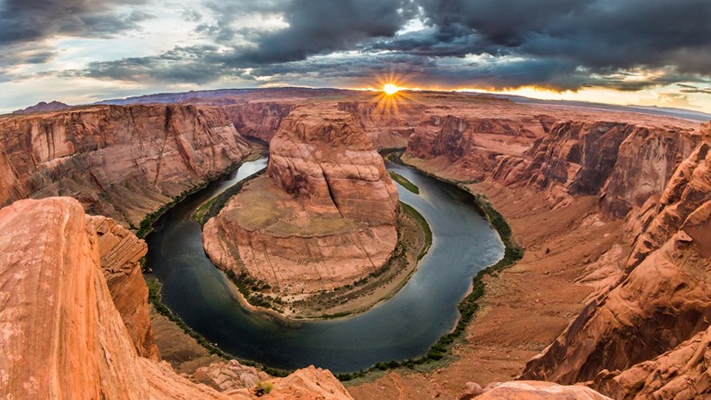
Best Time to Visit
The best time to visit the Grand Canyon largely depends on the type of experience you’re seeking, as the weather, crowd levels, and activities can vary throughout the year. Here are the main seasons to consider:
- Spring (March to May): Spring is a popular time to visit the Grand Canyon. The weather is generally mild, with daytime temperatures ranging from the mid-50s to mid-70s Fahrenheit (12°C to 24°C). The park’s wildflowers start blooming, adding a burst of color to the landscape. Spring is also a great time for hiking, as the trails are less crowded compared to the summer months.
- Summer (June to August): Summer is the peak tourist season at the Grand Canyon. The weather is warm to hot, with daytime temperatures often exceeding 90°F (32°C). It’s important to stay hydrated and take precautions against the sun. Despite the heat, summer is popular because it allows for a wider range of outdoor activities, including rafting trips and extended hiking options. Be prepared for larger crowds during this season.
- Fall (September to November): Fall is another popular time to visit the Grand Canyon. The temperatures are more moderate, ranging from the mid-60s to mid-70s Fahrenheit (18°C to 24°C), making it comfortable for outdoor activities. The foliage on the North Rim changes color, providing a stunning backdrop for photographs. Fall is a great time for both sightseeing and hiking, and the crowds begin to thin out after the summer rush.
- Winter (December to February): Winter is a quieter time to visit the Grand Canyon, especially on the South Rim. Daytime temperatures range from the mid-30s to mid-50s Fahrenheit (2°C to 13°C). While the North Rim is closed due to heavy snowfall, the South Rim remains accessible. The snow-capped landscape offers a unique and serene atmosphere, and visitors can enjoy cross-country skiing, snowshoeing, and more peaceful viewpoints.
Considerations:
- South Rim vs. North Rim: The South Rim is open year-round and offers more amenities, while the North Rim has limited access and services from mid-May to mid-October due to heavy snowfall.
- Crowds: Spring and fall offer pleasant weather and fewer crowds compared to the peak summer season.
- Activities: Summer allows for a wider range of outdoor activities, including river rafting and longer hikes. Winter offers a quieter experience with unique snow-covered vistas.





